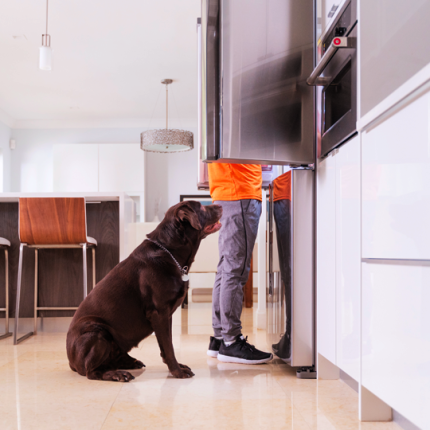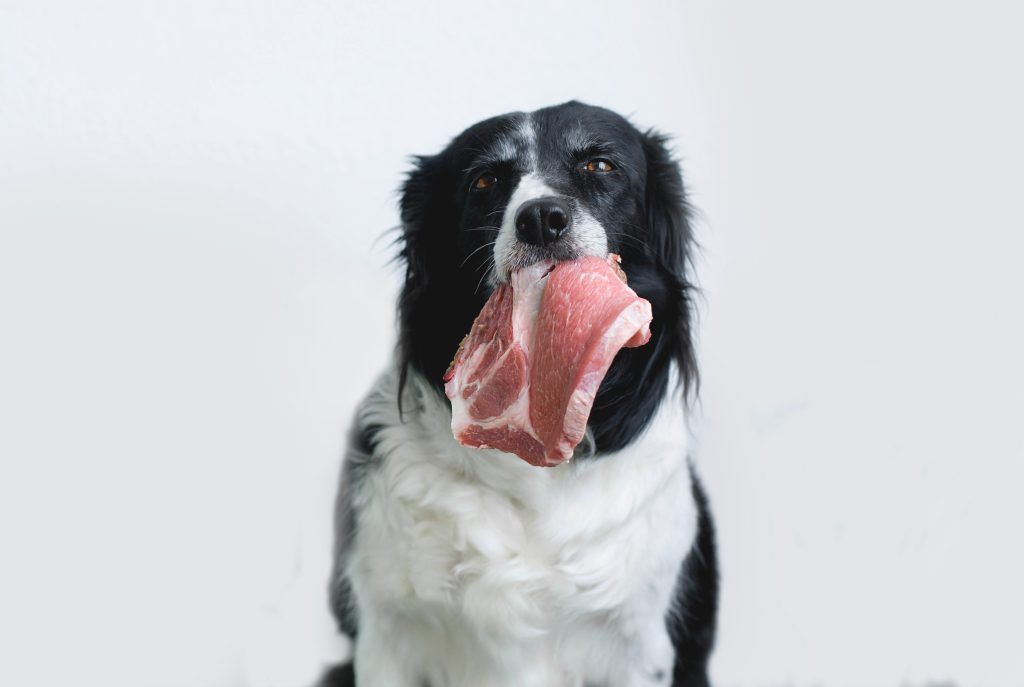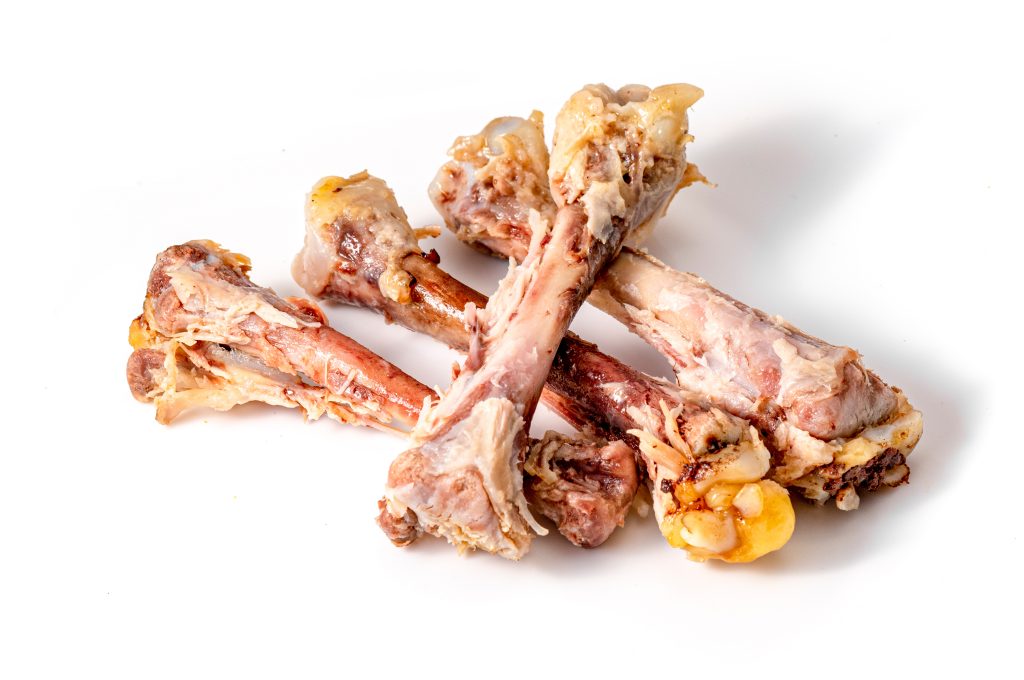Cooked vs. Raw Pet Food: Choosing the best diet for your pet.

Cooked vs. Raw Pet Food: Choosing the best diet for your pet.
Pet owners, dog trainers, breeders, and veterinarians are witnessing firsthand the benefits of raw feeding. But the question remains among many pet parents: “Can I really feed my dog a raw diet?”. This blog will compare feeding home-cooked vs. raw pet food to provide insight into both. Discover more and choose what’s best for your pet!
It is true that the cooking process can help eliminate unwanted bacteria in your pet’s food. While it may kill unwanted pathogens, cooking also kills beneficial bacteria and destroys enzymes that are essential for healthy digestion. Before dogs and cats were domesticated, they consumed their prey in the wild without using a microwave or a stove, and their populations thrived. A healthy dog’s body is built to resist the small amounts of bacteria occasionally present in raw foods, including meats. The truth is our dogs and cats are exposed to pathogens every day in their environment just by living their normal lives. A healthy digestive and immune system can handle normal bacteria levels – good and bad.

The benefits of feeding your dog or cat a truly raw diet.
Feeding a raw diet has various health benefits. Some of these include healthier skin, improved dental hygiene, smaller stools, and higher energy levels. A truly raw diet incorporates a combination of muscle meats, edible bones, organs, fur, feathers, fruits, vegetables, and other whole foods. When the right foods are fed, a raw diet provides our pets with all of the essential vitamins, minerals, and nutrients to help them be their healthiest selves. Green tripe, for example, is a natural source of essential manganese, and whole fish offer omega-3 fatty acids for joint health. Carnos’ wild-caught sardines are a great source of natural omega-3’s and Vitamin D and are a customer favorite! Whole foods can provide a full spectrum of absorbable nutrients for your dog’s body.
The impacts of cooking raw food for your pets.
Raw meat is perfectly digestible for most dogs and cats. But, of course, there are always exceptions. Each dog lives a unique experience and there is no such thing as a perfect, one-size-fits-all diet. In most cases, a raw diet can drastically improve your pets’ health and wellness, and we encourage you to try it out to receive optimal benefits. However, raw food may not be the best option if your pet has a compromised immune system or medical conditions like inflammatory bowel disease. In order to ease the natural bacterial load on dogs with certain health conditions, a lightly home-cooked diet may be beneficial. That said, it is important to be aware of the impact that cooking has on various nutrients.
Even lightly cooking your pet’s food — particularly meat and organs — can change it; here’s how:
- A reduction of B vitamins and taurine.
- The destruction of vitamin C and beneficial phytonutrients.
- The destruction of natural enzymes and bacteria that are beneficial to a healthy gut microbiome.

- Even lightly cooking raw meats and organs can cause a change in the structure of proteins and fats.
- When raw meat is properly cooked, the mineral content per gram of meat can actually increase. This is because minerals are not heat sensitive, so are not altered by the cooking process. As water loss occurs in the meat as it is being cooked, the weight of the meat decreases but the mineral content remains the same, resulting in a higher mineral content per gram of meat. For example, when prepared properly, cooked beef liver is higher in copper per gram than raw beef liver—this is because the cooked liver has less water weight diluting the mineral content.
- Because of the loss of some nutrients that happens when you cook raw food, you may need to add those nutrients back into your pet’s diet through increased supplementation. We recommend working with a pet nutritionist to ensure that you are crafting a diet that supports all of your pet’s nutritional needs.
Safe practices for lightly cooking raw food.
When cooking meat, make sure to keep it at a safe internal temperature.
If you do need to cook your raw food before serving it to your pet, lightly cook raw ingredients or complete grinds in the oven or sous vide just until the internal temperature reaches the safe level for whichever type of meat you are preparing. When cooking, meat must be kept to a safe internal temperature because lower cooking temperatures will not kill bacteria but will instead allow it to multiply; you can use a meat thermometer to help monitor this while you’re cooking. Once cooked, food should be cooled appropriately before serving. Any excess cooked food can be stored in the refrigerator for a few days but if longer storage is required, the food should be frozen.
Never cook raw food in the microwave.
Microwaving raw food should always be avoided, especially when it comes to meats. This process can cook meat unevenly, allowing bacteria to grow. You should also avoid boiling and other higher-heat methods such as pan frying or grilling. Boiling will cause the food to lose nutrients into the water, while higher-heat methods create compounds in food we should avoid for our pets.
Never serve your pet cooked bones.

Raw meaty bones should never be cooked unless you are boiling a bone broth or stock and discarding the cooked bone afterwards. Cooked bones are susceptible to splintering when chewed and present a serious intestinal puncture and choking hazard for your pet. Raw meaty bones should only be served raw, as the bones are softer and easier for your pet to crunch down on. If you’re looking for even softer bones that work well for most pets, our chicken frames, chicken feet, duck feet, Duck Necks, and Chicken Necks are great options.
Learn more about what kinds of bones our pets should and shouldn’t have and why.
Don’t cook the fat.
Cooked fats are a well-known trigger for pancreatitis, so products like fatty grinds, fatty meats, and raw fats should never be cooked due to this risk.
Safe practices for handling raw food.
Ensuring safe handling of raw meat, poultry seafood, fruits, and vegetables will help to mitigate the growth of unwanted pathogens. Some steps you can take to practice safe food handling:
- Keep food in frozen temperatures below 15°F until ready to use.
- Safely defrost in the refrigerator between 33°F and 40°F and serve within 48 hours once defrosted.
- Wash hands, surfaces, and utensils with hot soapy water thoroughly both before and after handling raw food.
- Food should be kept in its original sealed Carnos packaging before use, and in airtight bags or containers mid-use.
More information on safe handling practices can be found on our website.
Disclaimer: This blog is intended for educational purposes only. You are responsible for your pets’ health and safety. We encourage you to research topics further and consult with your Veterinarian or Pet Nutritionist before modifying your pets’ diet. If you’d like more one-on-one guidance, we offer consultation calls with our in-house raw feeding experts.